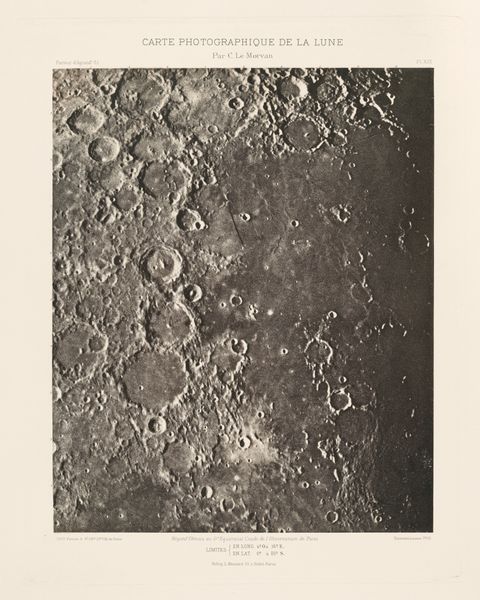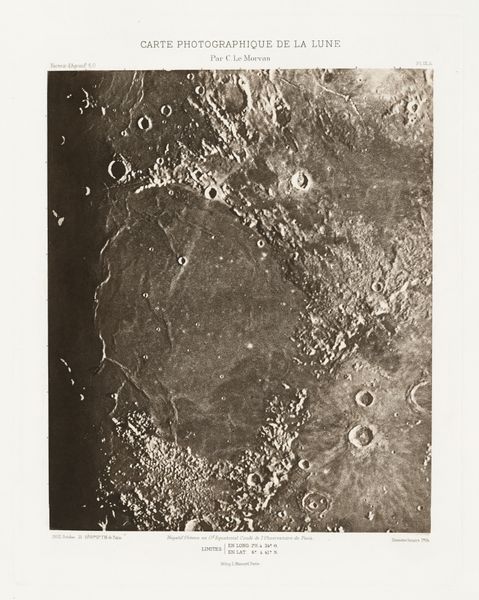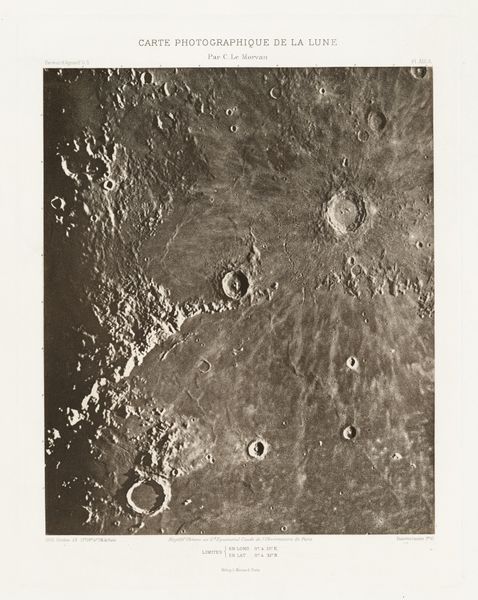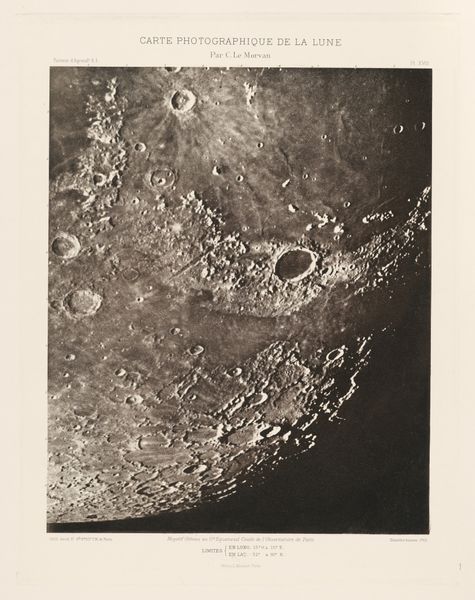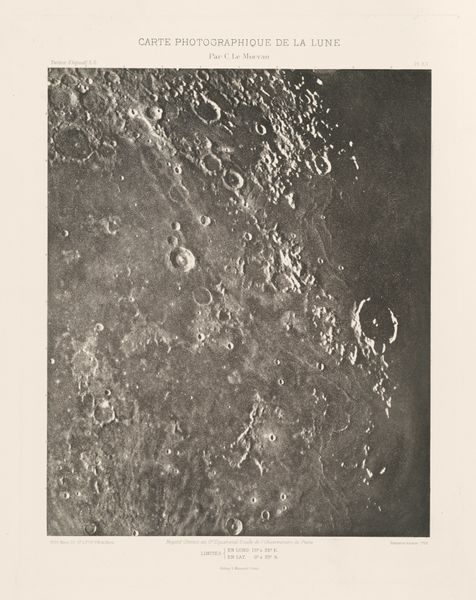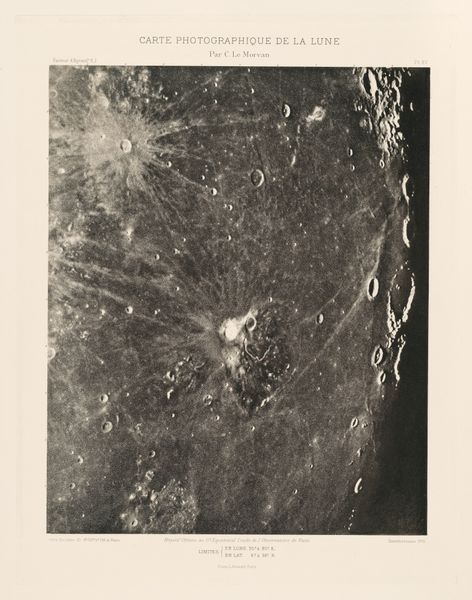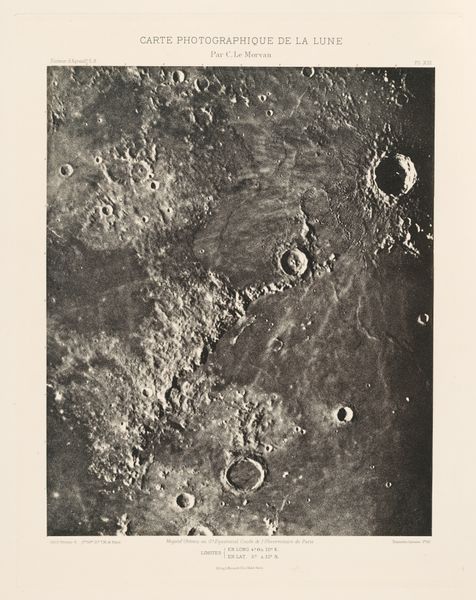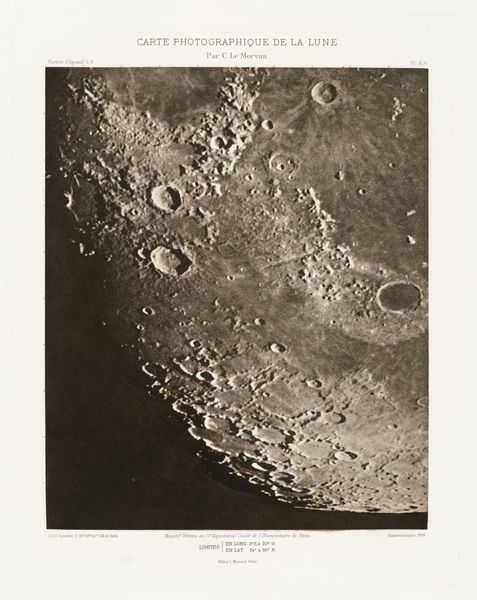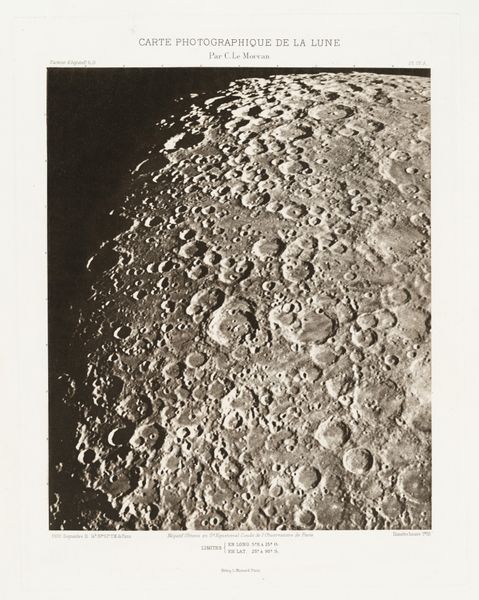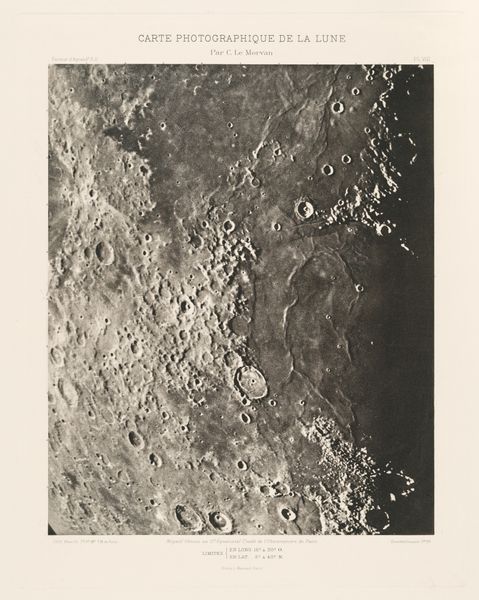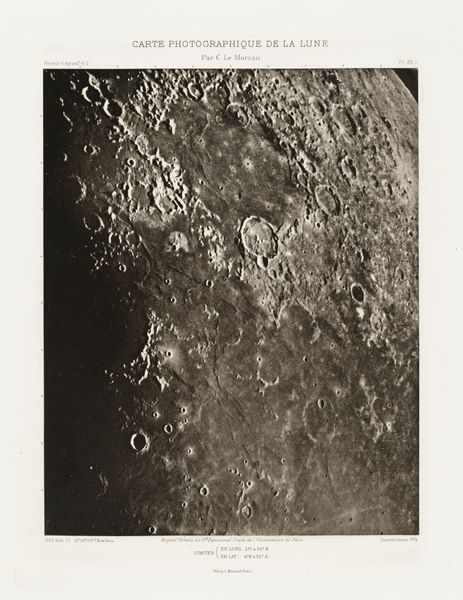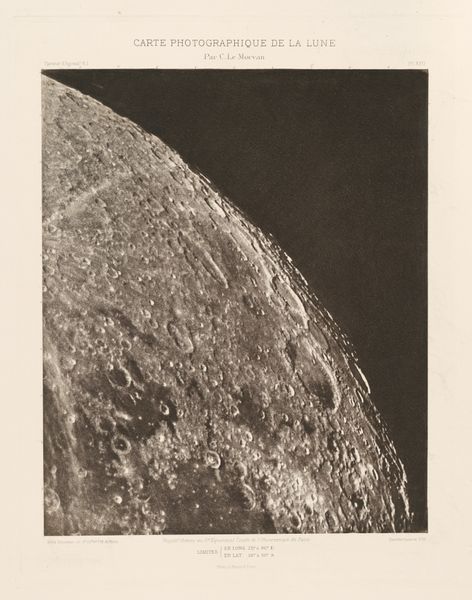
Carte photographique de la lune, planche XIV (Photographic Chart of the Moon, plate XIV) Possibly 1899 - 1914
0:00
0:00
print, photography, photomontage
# print
#
landscape
#
photography
#
geometric
#
photomontage
#
modernism
Dimensions: image: 31.1 × 25.5 cm (12 1/4 × 10 1/16 in.) plate: 38.9 × 29.5 cm (15 5/16 × 11 5/8 in.) sheet: 49 × 37.9 cm (19 5/16 × 14 15/16 in.) tissue: 42.55 × 37.47 cm (16 3/4 × 14 3/4 in.)
Copyright: National Gallery of Art: CC0 1.0
Curator: Today we’re looking at “Carte photographique de la lune, planche XIV,” or "Photographic Chart of the Moon, plate XIV," by Charles Le Morvan. This print, possibly created between 1899 and 1914, employs photomontage techniques. Editor: Wow, it's eerie. Makes me think of a charcoal drawing—the moon's surface, all craters and shadows, swirling around some unseen force. Very moody. Curator: It's more than just an artistic rendering; consider the scientific context. In this era, documenting the cosmos involved meticulous observation, long exposures, and the careful piecing together of photographic fragments. The accuracy was key. Editor: Accuracy, sure, but also the sublime. Even now, seeing this feels less about a scientific report and more like peeking behind a cosmic curtain. Look how the light spills around the craters—almost painterly. Curator: Indeed. But think about the shift. This marks a transitional period when photography challenged the dominance of observational drawing in scientific fields. Representing space went through a transformation regarding objectiveness. Editor: Hmm, perhaps, but Le Morvan found a strange, romantic poetry in that pursuit. The geometric details, the varying shades of gray, feel somehow organic, as if the moon itself is breathing on the page. Almost challenges your claim that he focused only on objectiveness. Curator: Fair point. His method, even driven by scientific ambition, couldn't escape interpretation. What choices did he make with his process? What photographic pieces were selected? All these speak to his perspective and contribute meaning. Editor: Exactly. It invites us to contemplate our own place in the universe and our capacity for both observation and wonder. Sort of puts things in perspective, doesn't it? Makes our daily worries seem tiny in comparison to this cratered landscape of mystery. Curator: The collision of art and science asks questions about what we perceive to be objective and, more crucially, what is not. We might appreciate his attempt to capture it through these scientific images. Editor: It’s funny; for an image depicting a dead rock orbiting our planet, this thing pulses with life. Glad we took a moment with it.
Comments
No comments
Be the first to comment and join the conversation on the ultimate creative platform.
